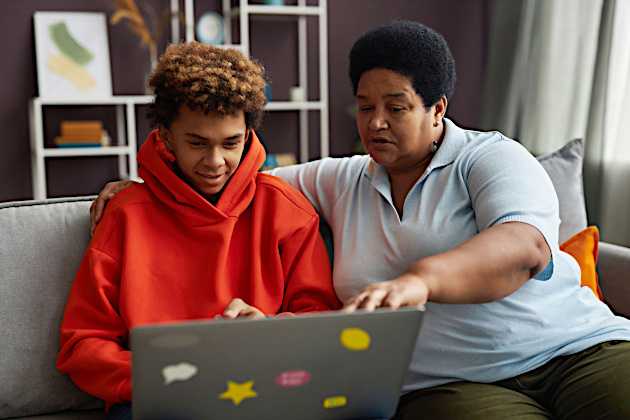Washington State University applications surge with help from Common App

Washington State University (WSU) was in the process of solidifying its partnership with Common App for the 2021 recruitment season when it learned that all other in-state, public universities were preparing a similar move. The change has led to a surge in applications and improved the overall process for students, parents, and other state universities alike.
“Community of practice”
Instead of approaching admissions as a competition for individual students, the six public universities in Washington meet monthly to compare their experiences and discuss enrollment trends, Andrew Brewick, WSU Pullman’s admissions director, told me.
“I’m happy to report there’s very little sense of competition,” he says, “Instead, it’s a really robust community of practice that helps us understand what other institutions are doing and discuss how we can best support students.”
Because all of the participating universities use Common App, students can shift their focus from how to apply to college to determining which school is the best fit for them.
The six public universities offer a guaranteed admissions program that provides a spot to any Washington student for a participating school or district with an unweighted, cumulative GPA of 3.0 and completion of all college preparatory coursework. Because all of the participating universities use Common App, students can shift their focus from how to apply to college to determining which school is the best fit for them. “For students applying to other public universities in the state, we’re able to move the conversation to the benefits of each institution and each campus experience in the case of Washington State University,” Brewick said.
Demographic shift
Brewick notes the largest change has been the growing number of Latinx applicants from Washington’s central valley. Common App sees similar trends across the Western region, where Latinx students comprised 23.4% of all applicants in the 2022-23 application season.
And because the state has one of the country’s most generous affordability campaigns for postsecondary education, students from low-income backgrounds can attend college for free or nearly free. Across the Western United States, we’ve seen a 29% rise in the number of applicants from families living in zip codes below the national median household income ($70,000) from 26,763 in 2015 to 34,409 in 2022.
The increased interest among students from low-income backgrounds aligns well with the state’s drive to support them. “Our only issue is helping families understand that it’s available and that we mean it’s free,” Brewick says.
For Washington State University specifically, membership in Common App has translated into record growth. This fall, it enrolled 21,923 undergraduates, its largest cohort of first-year students since 2019 across the university’s six campuses, each of which provides prospective applicants with a unique experience.
Achieving record growth
For Washington State University specifically, membership in Common App has translated into record growth. This fall, it enrolled 21,923 undergraduates, its largest cohort of first-year students since 2019 across the university’s six campuses, each of which provides prospective applicants with a unique experience.
The largest WSU campus, located in Pullman, features a quintessential residential campus experience. WSU Spokane focuses largely on degrees in health care, while WSU Tri-Cities in Richland on the Columbia river is devoted to Science, Technology, Engineering and Math. Locations in Vancouver and Everett as well as its Global campus provide opportunities in every corner of the state and beyond.
The university serves a large number of first-generation students, who make up about a third of its population, as well as students of color, who account for 34% of the study body. Brewick says the most recent applicant cycle set records for African American, Asian American, and Pacific Islanders as well as Latinx applicants and admitted students. This follows a general trend we’re seeing at Common App throughout the West, where applicants who identify as an underrepresented race or ethnicity have increased by 62% from 35,000 in 2015 to more than 57,000 in 2022 and represented 37% of the applicant pool in 2022.
“Many of our students may not have a desktop or laptop at home and have limited time to spend in the application experience,” he says. “Common App has changed the game for those students because they can create a single profile and go through a very short experience for each of the institutions to which they want to apply.”
Reaching a diverse applicant pool
Brewick tells us that the ease of Common App has helped Washington State reach students who may have limited access to technology or need application fee waivers. “Many of our students may not have a desktop or laptop at home and have limited time to spend in the application experience,” he says. “Common App has changed the game for those students because they can create a single profile and go through a very short experience for each of the institutions to which they want to apply.”
“It also allows a student to request a fee waiver once as opposed to multiple times,” he adds. “It not only saves time. It also removes some of that stigma from a student having to prove their financial need more than once. It’s nowhere near as psychologically taxing.” A growing number of students eligible for fee waivers–this year alone saw a 10% increase year over year in the Western states as of Feb 2 in the season.
Through Common App's Next Chapter, we're working to close our equity gap in students pursuing postsecondary opportunities by reducing barriers like application fees.
Strengthening relationships with K12 partners
Washington State’s membership with Common App has also given the university an opportunity to strengthen its relationships with college counselors across the state. Brewick says the university’s recruiters were not able to access high school settings during the pandemic, and counselors seemed focused on mental health and behavioral issues during the crisis. Not only that, the state has seen significant turnover among college and career readiness counselors in the last four years.
“Now Common App gives us the ability to engage with them and be a partner as they transition their focus back to post-secondary and career paths.” And because all state institutions use Common App, recruiters can help train counselors on one application, allowing them to focus on matching students with the right schools instead of learning the ins and outs of different admissions forms. “We’re hearing from counselors that they feel like they have more time,” he says.
New insights and opportunities
In addition to strengthening its relationships with in-state partners, Common App is helping Washington State better understand opportunities with students outside the state. In just two years, Brewick says he has a better sense of market traction in Texas, Colorado, and the Chicago metro area.
“That allows us to deploy our recruitment resources in a much more targeted manner,” he says. “We can really dig into that data and analyze some geographic markets that were a surprise and hopefully increase our yield and enrollment from those areas.”
Elyse Armstrong is a Data Scientist on the Data Analytics and Research (DAR) team at Common App, supporting our data operations, visualizations, and reporting efforts. She is dedicated to creating equity in the college admissions process and using data to transform student experiences and outcomes.



